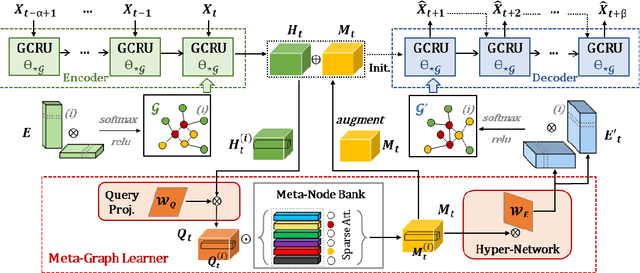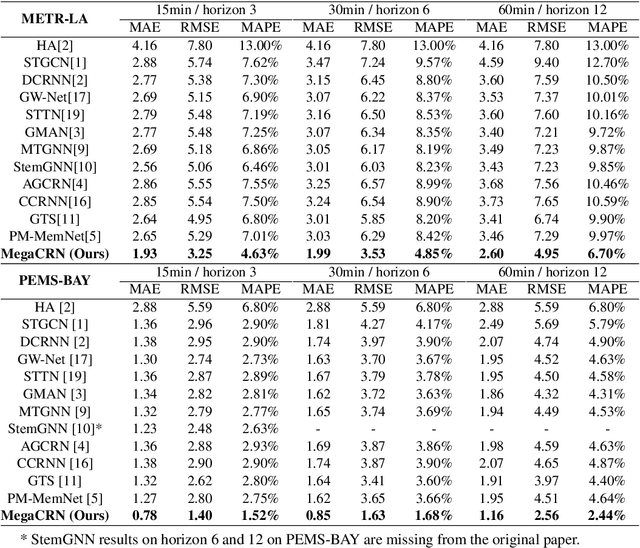Jiawei Yong
Multimodal Point-of-Interest Recommendation
Oct 07, 2024



Abstract:Large Language Models are applied to recommendation tasks such as items to buy and news articles to read. Point of Interest is quite a new area to sequential recommendation based on language representations of multimodal datasets. As a first step to prove our concepts, we focused on restaurant recommendation based on each user's past visit history. When choosing a next restaurant to visit, a user would consider genre and location of the venue and, if available, pictures of dishes served there. We created a pseudo restaurant check-in history dataset from the Foursquare dataset and the FoodX-251 dataset by converting pictures into text descriptions with a multimodal model called LLaVA, and used a language-based sequential recommendation framework named Recformer proposed in 2023. A model trained on this semi-multimodal dataset has outperformed another model trained on the same dataset without picture descriptions. This suggests that this semi-multimodal model reflects actual human behaviours and that our path to a multimodal recommendation model is in the right direction.
Revisiting Mobility Modeling with Graph: A Graph Transformer Model for Next Point-of-Interest Recommendation
Oct 02, 2023Abstract:Next Point-of-Interest (POI) recommendation plays a crucial role in urban mobility applications. Recently, POI recommendation models based on Graph Neural Networks (GNN) have been extensively studied and achieved, however, the effective incorporation of both spatial and temporal information into such GNN-based models remains challenging. Extracting distinct fine-grained features unique to each piece of information is difficult since temporal information often includes spatial information, as users tend to visit nearby POIs. To address the challenge, we propose \textbf{\underline{Mob}}ility \textbf{\underline{G}}raph \textbf{\underline{T}}ransformer (MobGT) that enables us to fully leverage graphs to capture both the spatial and temporal features in users' mobility patterns. MobGT combines individual spatial and temporal graph encoders to capture unique features and global user-location relations. Additionally, it incorporates a mobility encoder based on Graph Transformer to extract higher-order information between POIs. To address the long-tailed problem in spatial-temporal data, MobGT introduces a novel loss function, Tail Loss. Experimental results demonstrate that MobGT outperforms state-of-the-art models on various datasets and metrics, achieving 24\% improvement on average. Our codes are available at \url{https://github.com/Yukayo/MobGT}.
MegaCRN: Meta-Graph Convolutional Recurrent Network for Spatio-Temporal Modeling
Dec 12, 2022



Abstract:Spatio-temporal modeling as a canonical task of multivariate time series forecasting has been a significant research topic in AI community. To address the underlying heterogeneity and non-stationarity implied in the graph streams, in this study, we propose Spatio-Temporal Meta-Graph Learning as a novel Graph Structure Learning mechanism on spatio-temporal data. Specifically, we implement this idea into Meta-Graph Convolutional Recurrent Network (MegaCRN) by plugging the Meta-Graph Learner powered by a Meta-Node Bank into GCRN encoder-decoder. We conduct a comprehensive evaluation on two benchmark datasets (METR-LA and PEMS-BAY) and a large-scale spatio-temporal dataset that contains a variaty of non-stationary phenomena. Our model outperformed the state-of-the-arts to a large degree on all three datasets (over 27% MAE and 34% RMSE). Besides, through a series of qualitative evaluations, we demonstrate that our model can explicitly disentangle locations and time slots with different patterns and be robustly adaptive to different anomalous situations. Codes and datasets are available at https://github.com/deepkashiwa20/MegaCRN.
Spatio-Temporal Meta-Graph Learning for Traffic Forecasting
Dec 08, 2022



Abstract:Traffic forecasting as a canonical task of multivariate time series forecasting has been a significant research topic in AI community. To address the spatio-temporal heterogeneity and non-stationarity implied in the traffic stream, in this study, we propose Spatio-Temporal Meta-Graph Learning as a novel Graph Structure Learning mechanism on spatio-temporal data. Specifically, we implement this idea into Meta-Graph Convolutional Recurrent Network (MegaCRN) by plugging the Meta-Graph Learner powered by a Meta-Node Bank into GCRN encoder-decoder. We conduct a comprehensive evaluation on two benchmark datasets (METR-LA and PEMS-BAY) and a new large-scale traffic speed dataset in which traffic incident information is contained. Our model outperformed the state-of-the-arts to a large degree on all three datasets (over 27% MAE and 34% RMSE). Besides, through a series of qualitative evaluations, we demonstrate that our model can explicitly disentangle the road links and time slots with different patterns and be robustly adaptive to any anomalous traffic situations. Codes and datasets are available at https://github.com/deepkashiwa20/MegaCRN.
 Add to Chrome
Add to Chrome Add to Firefox
Add to Firefox Add to Edge
Add to Edge